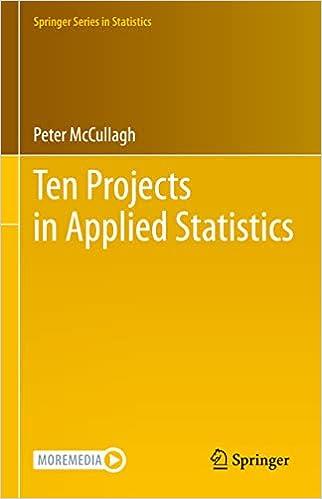Let (B sim P_{n, alpha}) be the partition after (n) customers in the Chinese restaurant process with
Question:
Let \(B \sim P_{n, \alpha}\) be the partition after \(n\) customers in the Chinese restaurant process with parameter \(\alpha\), and let \(\hat{\alpha}(B)\) be the maximum-likelihood estimate. One way to approximate the variance of \(\hat{\alpha}(B)\) is to generate bootstrap samples \(B_{1}^{*}, \ldots, B_{m}^{*}\) by simulation, and to report the sample variance of the bootstrap estimates \(\hat{\alpha}\left(B_{1}^{*}ight), \ldots, \hat{\alpha}\left(B_{m}^{*}ight)\). In the parametric version, the bootstrap samples are conditionally independent and identically distributed according to the Ewens distribution \(B_{i}^{*} \sim P_{n, \hat{\alpha}(B)}\). For large \(n\), show that
\[
\begin{aligned}
E\left(\hat{\alpha}\left(B^{*}ight) \mid Bight) & =\hat{\alpha}(B)+o(1) \\
\operatorname{var}\left(\hat{\alpha}\left(B^{*}ight) \mid Bight) & =\hat{\alpha}(B) / \log n+o(1 / \log n)
\end{aligned}
\]
in agreement with the standard maximum-likelihood calculation (11.6).
Step by Step Answer:






